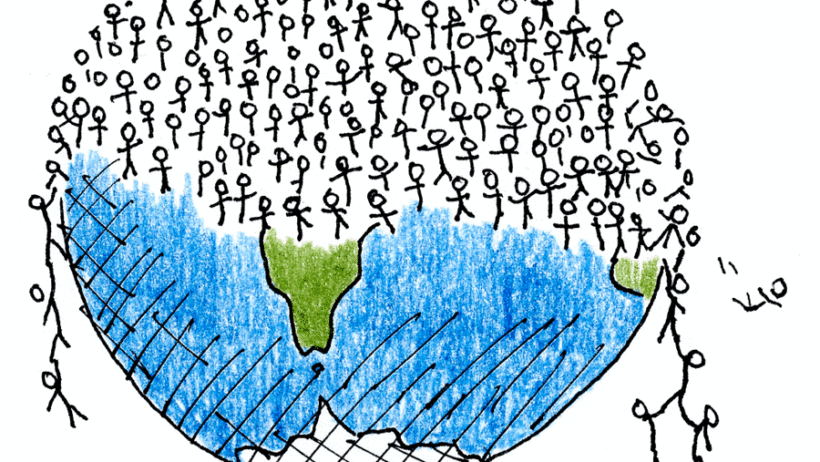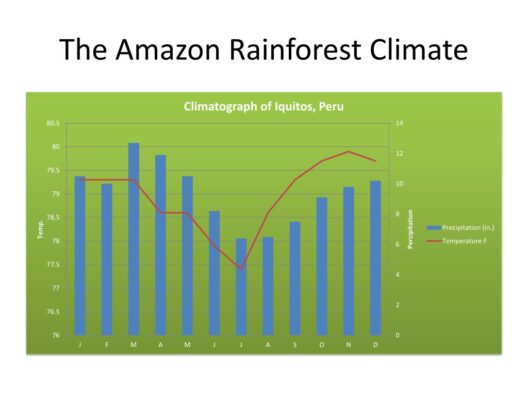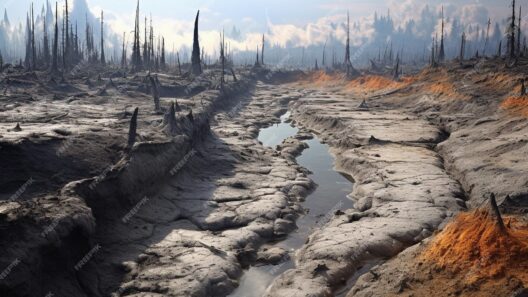As global temperatures continue to rise, the effects of climate change resonate throughout communities, influencing not only the environment but also the socio-economic fabric of nations. Global warming serves as a crucible wherein local challenges are intensified and previously latent issues begin to bubble to the surface. The intention of this discourse is to illuminate the manifold ways in which climate change exerts pressure on both localities and nations while also encouraging a paradigm shift in our perspective towards communal resilience and innovation.
Initially, it’s crucial to acknowledge the unique interplay between global warming and community dynamics. Localities bear the brunt of a changing climate, facing increased incidents of extreme weather events such as hurricanes, floods, and droughts. A poignant illustration of this is coastal cities grappling with rising sea levels. These areas are not merely passive victims of nature but active players in a theater of escalating crises, forced to adapt or perish. The looming specter of displacement haunts communities situated in these vulnerable zones, raising questions about social equity and justice as marginalized groups often experience the direst consequences of such upheavals.
In addition to environmental degradation, the economic repercussions of climate change are profound. Agriculture, a cornerstone of many local economies, is severely affected by shifting weather patterns. Crop yields fluctuate in direct response to irregular rainfall and increasing temperatures, undermining food security and local livelihoods. As farmers struggle to maintain viable harvests, the ripple effects can precipitate food scarcity and inflated prices, exacerbating poverty and inequality. The economic strain extends beyond the fields; entire communities, reliant on agrarian success, find themselves in a precarious balance, grappling with unemployment and diminished local investment.
Moreover, urban centers, often epitomized by their bustling activity and dense populations, showcase a different facet of pressure due to global warming. Heatwaves intensify urban heat islands, where city temperatures soar disproportionately compared to surrounding areas. This phenomenon disproportionately impacts vulnerable populations, including the elderly, whose health is compromised by extreme temperatures. Local health services, already strained, face increasing demands as heat-related illnesses proliferate. As a result, cities must innovate — investing in green infrastructure, enhancing public health preparedness, and fostering community cohesion can help mitigate these urban pressures.
Climate change doesn’t merely affect the physical environment; it often reverberates through the cultural and social landscapes of communities. As ecosystems are disrupted, traditional practices tied to land and local biodiversity may be threatened. Indigenous communities, often stewards of intricate knowledge regarding local ecosystems, see their ways of life eroded. In response, there is an emerging recognition of the importance of indigenous voices and perspectives in climate action, fostering collaborative approaches that honor traditional ecological knowledge and contemporary environmental science.
Communities, therefore, bear a significant weight of responsibility, not only for their immediate survival but also in shaping national narratives and policies. Grassroots movements focused on sustainability, conservation, and renewable energy are increasingly pivotal in this context. Local activism serves as a bellwether for national agendas, pushing the envelope on climate debates and influencing policy shifts. The power of community-led initiatives can redefine energy needs, promote sustainable practices, and inspire collective action at the national level.
On a broader scale, climate change presents opportunities for nations to rethink their development trajectories. There is a growing realization among policymakers that investing in climate resilience can yield economic dividends. Transitioning to renewable energy sources not only reduces greenhouse gas emissions but also creates jobs and fosters innovation. National policies geared towards sustainability can catalyze economic revitalization, particularly in regions heavy on fossil fuel dependence. The tension between immediate economic gain and long-term sustainability thus unfolds, requiring astute navigation.
However, this transition is fraught with challenges; vested interests often attempt to thwart progress in favor of maintaining the status quo. The urgency for change, coupled with the inertia of traditional energy sectors, can lead to a quagmire of political discord. Yet, the imperative for constructive dialogue remains steadfast. Communities must engage proactively with policymakers, providing crucial local insights that can inform national priorities and engender collective support for sustainable initiatives. This dialogue is vital, as it lays the groundwork for an inclusive governance model responsive to the diverse needs of the populace.
The future, shaped profoundly by our current actions, beckons for collaboration across sectors and scales. With increased public awareness of climate issues, citizens are more empowered than ever before to make informed decisions and advocate for systemic change. Educational programs, awareness campaigns, and community engagement initiatives contribute to a growing consciousness about environmental stewardship. This collective responsibility can engender a sense of unity, drawing communities together while reinforcing the notion that local actions can catalyze national transformation.
In conclusion, the pressures of global warming extend far beyond immediate environmental implications. The intersection of climate change with local and national lives underscores a complex tapestry of interdependencies that demand our attention and action. By reshaping perspectives to focus on resilience, collaboration, and innovation, communities can not only withstand the storms of change but also thrive amid adversity. Embracing this shift will be pivotal in ensuring a sustainable and equitable future for all, affirming the belief that transformative action can emerge from the grassroots and flourish across nations.








